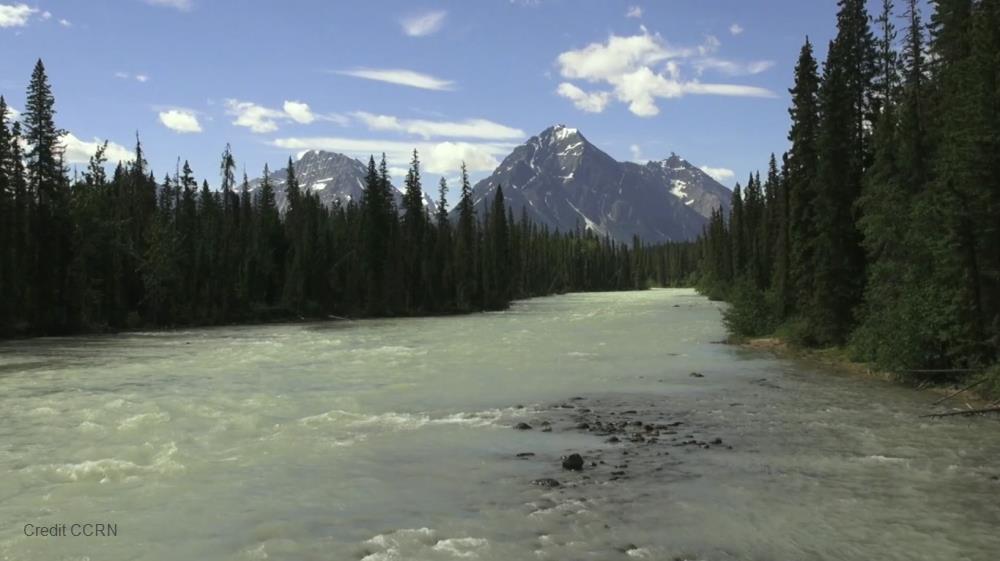
Related items loading ...
Publication
Additional Information
Download
Section 1: Publication
Publication Type
Conference Poster
Authorship
Ji Xiaowen, Challis Jonathan K., Cantin Jenna, Perez Ana S. Cardenas, Gong Yufeng, Giesy John P., Brinkmann Markus
Title
Application of in situ diffusive gradients in thin-films technique in the laboratory and the field to investigate desorption kinetics of psychoactive drugs in sandy sediment
Year
2022
Publication Outlet
AOSM2022
DOI
ISBN
ISSN
Citation
Xiaowen Ji, Jonathan K. Challis, Jenna Cantin, Ana S. Cardenas Perez, Yufeng Gong, John P. Giesy, Markus Brinkmann (2022). Application of in situ diffusive gradients in thin-films technique in the laboratory and the field to investigate desorption kinetics of psychoactive drugs in sandy sediment. Proceedings of the GWF Annual Open Science Meeting, May 16-18, 2022.
Abstract
Dynamic processes of organic contaminants in sediments can have important toxicological implications in aquatic systems. The current study used diffusive gradients in thin-films (DGT) devices deployed in sandy sediments both under laboratory conditions spiked with nine antipsychotic drugs (i.e., amitriptyline, bupropion, carbamazepine, citalopram, clozapine, duloxetine, fluoxetine, lamotrigine, and venlafaxine), and under field conditions in riverbank sediments of South Saskatchewan River. Samplers (standard DGT and DGT sediment probes) were deployed for 1 to 30 days in the laboratory and for 1 to 21 days in the field to determine the flux of these compounds to DGT devices, the exchange rates between the porewater and sediment solid phase, and flux at the water?sediment interface in the field. The results showed a continuous removal of these drugs to the binding gel and induced a mobile flux from the DGT device to the adjacent sediment solution. A dynamic model, DGT?induced fluxes in soils and sediments, was used to derive rate constants of resupply of antipsychotics from solid phase to aqueous phase (response time, Tc) and distribution coefficients for labile antipsychotics. The largest labile pool was found for lamotrigine and carbamazepine and in both spiked and field sediments, where the fastest resupply rates of drugs were also found for carbamazepine and lamotrigine. In the field measurement, the dissolved concentration of antipsychotic drugs declined with sediment depth and the greatest concentrations were observed in the top layer (2 cm). The positive fluxes of all psychotic drugs were found from sediment to surface water. A partial resupply of psychotic drugs from sediment particles to porewater could be seen in both field measurement and laboratory simulation. However, the desorption processes occur within 15 cm sediment depth whereas adsorption was dominant in spiked sediments. Our study implies a dynamic releasing portion of pollutants from natural sediments, which may cause a potential risk for aquatic biota. This process may not be the same under laboratory conditions using spiking compared to exposure in the field. Nevertheless, the mechanism of interaction between sediment properties and different compounds to explain DIFS-derived parameters requires further dedicated studies.
Plain Language Summary
Section 2: Additional Information
Program Affiliations
Project Affiliations
Submitters
|
Xiaowen Ji | Submitter/Presenter | xij938@mail.usask.ca | School of Environment and Sustainability, University of Saskatchewan |
Publication Stage
N/A
Theme
Water Quality and Aquatic Ecosystems
Presentation Format
poster presentation
Additional Information
AOSM2022 First Author: Xiaowen Ji. School of Environment and Sustainability, University of Saskatchewan Additional Authors: Jonathan K. Challis: Toxicology Centre, University of Saskatchewan, Saskatoon, Canada Jenna Cantin Toxicology Centre, University of Saskatchewan, Saskatoon, Canada Ana S. Cardenas Perez: School of Environment and Sustainability, University of Saskatchewan, Saskatoon, Canada Yufeng Gong: Toxicology Centre, University of Saskatchewan, Saskatoon, Canada Department of Veterinary Biomedical Sciences, University of Saskatchewan, Saskatoon, Canada Department of Environmental Sciences, Baylor University, Waco, Texas, USA John P. Giesy: Toxicology Centre, University of Saskatchewan, Saskatoon, Canada Department of Veterinary Biomedical Sciences, University of Saskatchewan, Saskatoon, Canada Department of Environmental Sciences, Baylor University, Waco, Texas, USA Markus Brinkmann: Toxicology Centre, University of Saskatchewan, Saskatoon, Canada School of Environment and Sustainability, University of Saskatchewan, Saskatoon, Canada Global Institute for Water Security, University of Saskatchewan, Saskatoon, Canada Centre for Hydrology, University of Saskatchewan, Saskatoon, Canada
Section 3: Download
Download Links


 GWFNet
GWFNet Master
Master Data
Data Research
Research Map
Map
 Advanced
Advanced . . .
. . .

 Metadata Editor
Metadata Editor
 Record List
Record List
 Alias List Editor
Alias List Editor
 Legacy sites
Legacy sites